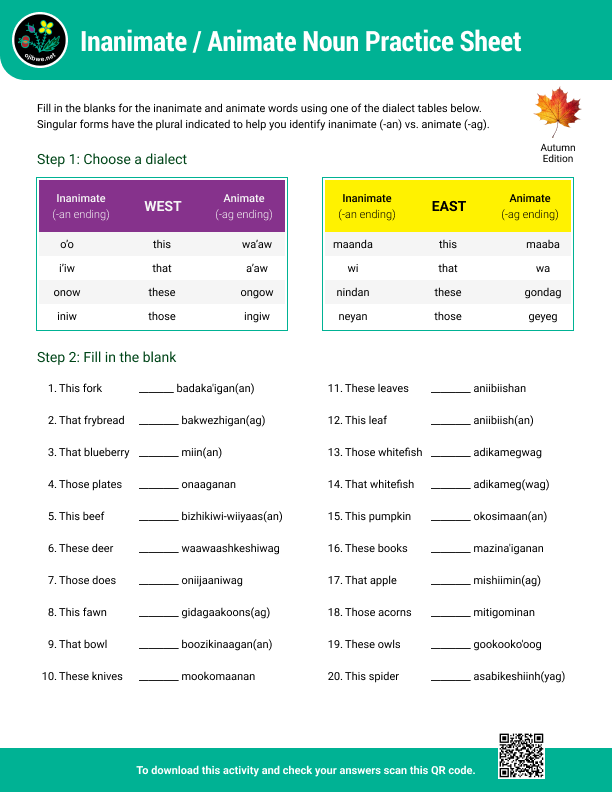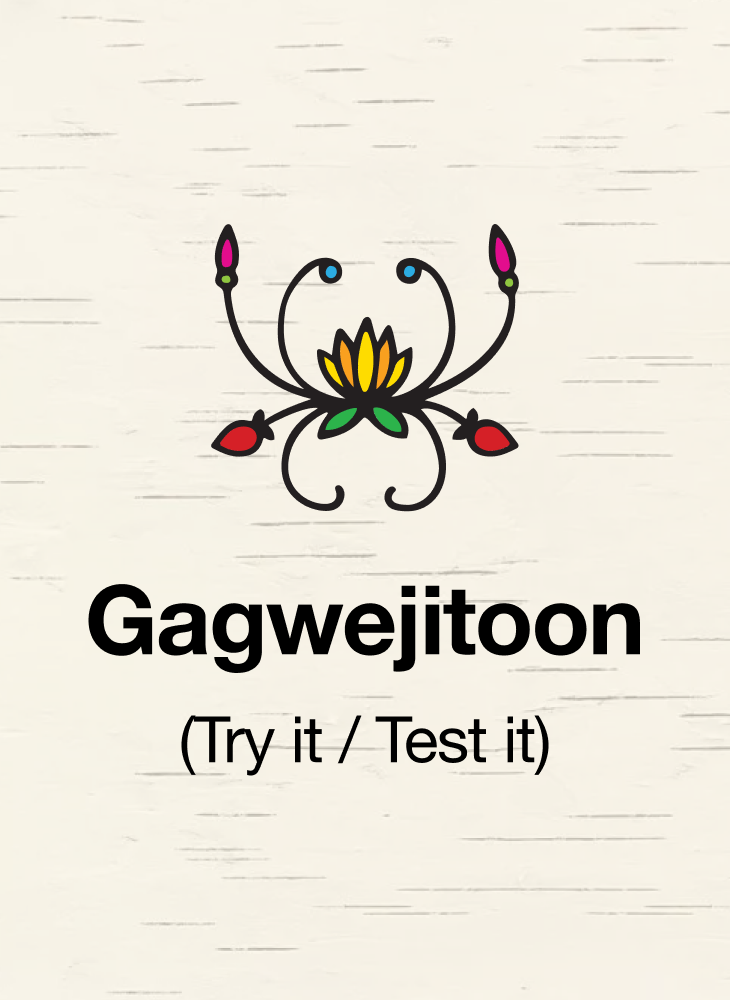Introduction to Nouns (The Objects of Action)
The idea of which category a noun falls into is not fixed. It is true that all people and animals are usually spoken about as “animate” but things English speakers think of as non-living are also sometimes placed into the “animate” category. For instance cars, potatoes, and apples to name a few. You may encounter stories about specific words and how they came to be in one category or another. These can be useful tools to remember a category but NOT to guess which category a noun will be in. In fact using the terms “animate” and “inanimate” can lead to philosophical problems because these are not terms based in Anishinaabe worldviews. This categorization of nouns happens in other languages too. For example, many romance languages give a “gender” to nouns, but they do not think of things as inherently “male” or “female.”
It will be easiest if you think of nouns simply as in one category or the other. This is what a fluent child would learn by listening and what second-language speakers need to spend a little time memorizing. We suggest you use “o’o” for the inanimate category if you are in the west and “maanda” for the inanimate category if you are in the east. And use the “a’aw” for the animate category if you are in the west and “maaba” for the animate category if you are in the east.
The language spoken now started long ago and if there ever was a worldview that caused the potato to be animate, it is no longer common knowledge. It is also fun to note that fluent speakers sometimes make a choice to talk about a thing in one category for a statement and the other category in a story. This is acceptable as long as they are matching their verb types to their noun categories. For example, a rock or a cross may take on different descriptions depending on how it is being talked about.
Two ways to find which category a noun is in
As you learn nouns, be sure to find out which category they fall into. There are two ways to find out which category a noun falls into.
#1 More Than One – Every noun has a singular and a plural form to help indicate whether a speaker is talking about one or more than one. All “o’o/maanda” nouns have a plural ending with the letter “n”. All “a’aw/maaba” nouns have a plural ending with the letter “g”. When you learn a new noun either ask your teacher for the plural or look it up right away.
For example:
| Nouns – Makizin Makizinan | makizin – shoe | makizinan – shoes |
|---|---|---|
| Nouns – Mishiimin Mishiiminag | mishiimin – apple | mishiiminag – apples |
#2 This or That – Another way to know if a noun is animate or inanimate is to listen for the way a speaker refers to that noun without repeating the word. There are short words to get that job done. The charts below help you see the words speakers use to indicate a noun or group of nouns that are near or far. When you look these up in the Ojibwe People’s Dictionary (western dialect) or the Nishnaabemwin Dictionary (eastern dialect) these words are called “pronoun demonstratives” because they are taking the place of nouns. Learning about nouns requires understanding the idea that they all fall into two categories and the little words below are a few of the words that are actually different between the west and the east. Choose the one you wish to use at home.
In the West:
| Inanimate
(-an endings) |
Animate
(-ag endings) |
|
|---|---|---|
| o’o | this | wa’aw |
| i’iw | that | a’aw |
| onow | these | ongow |
| iniw | those | ingiw |
In the East:
| Inanimate
( -an endings) |
Animate
( -ag endings) |
|
|---|---|---|
| maanda | this | maaba |
| wi | that | wa |
| nindan | these | gondag |
| neyan | those | geyeg |
Aanikanootan (Translate It)
The best way to learn these words is to practice them until they feel easy and automatic. Here are some worksheets to support the needed repetition.

Gagwejitoon (Try it / Test it)

